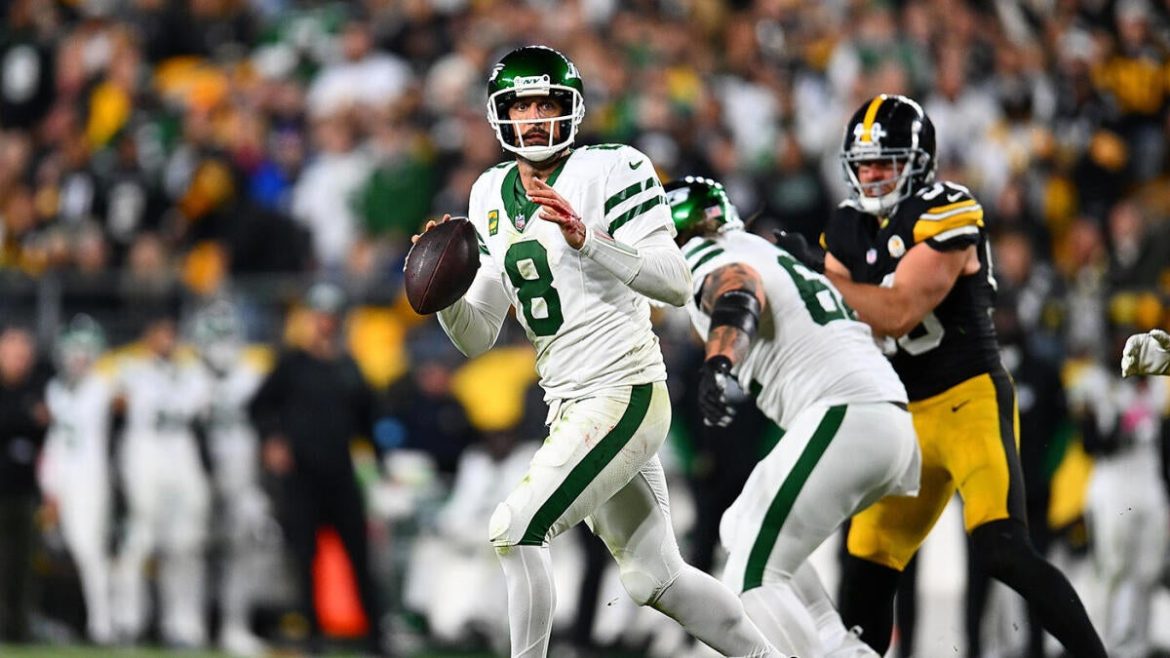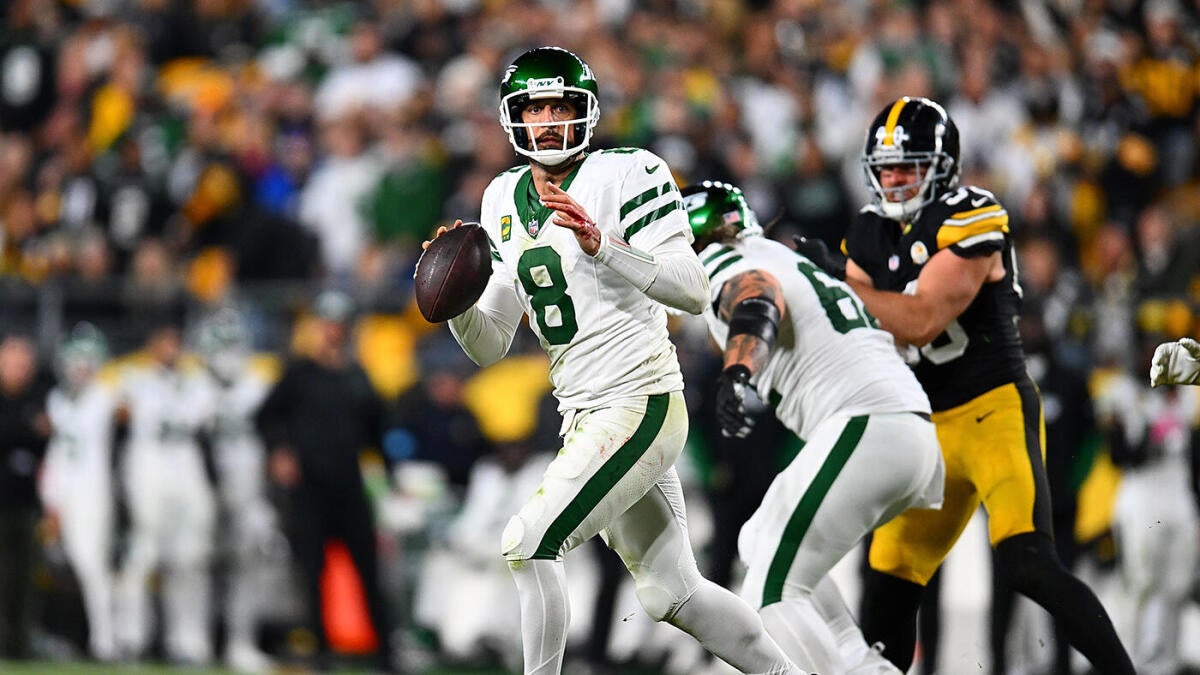Navigating the Steelers’ 2025 Offensive Transition: Zach Frazier and Aaron Rodgers in Focus
The Pittsburgh Steelers enter the 2025 NFL season amid significant transitions. Central to this narrative are two key figures: Zach Frazier, the young center anchoring a promising yet evolving offensive line, and Aaron Rodgers, the veteran quarterback whose arrival has generated both optimism and uncertainty. These developments intertwine, highlighting themes of leadership, chemistry, and expectation as the Steelers aim to blend youth and experience into a competitive unit.
—
Zach Frazier: The Emerging Leader on the Steelers’ Offensive Line
At just a second-year professional, Zach Frazier steps into a critical leadership role for the Steelers’ offensive line. Drafted in the second round in 2024, his elevation to starting center symbolizes the team’s commitment to youth and potential. Frazier is not merely a positional placeholder; he represents the linchpin responsible for orchestrating protections, calling out defensive alignments, and facilitating communication between the quarterback and the line.
Despite his relative inexperience, reports describe Frazier as “better equipped to lead” than before, suggesting growth in both confidence and technical mastery. This shift is vital considering the offensive line’s composition includes recent high draft picks like Broderick Jones and Troy Fautanu—rookie tackles expected to develop under pressure. Frazier’s role is to knit these pieces into a cohesive front, mitigating issues such as sacks allowed, which notably plagued the line in 2024.
Moreover, Frazier’s comments hint at the challenges and importance of building chemistry with the quarterback, especially in a context of transition. His acknowledgment of “chemistry being important” underscores the center’s understanding that technical skill alone doesn’t suffice; a deep, synergistic relationship with the QB is imperative for effective offensive execution.
—
Aaron Rodgers’ Arrival: Promise and Challenges
After a protracted period of speculation and negotiation, four-time NFL MVP Aaron Rodgers committed to a one-year, $13.65 million deal with the Steelers, marking a pivotal moment for the franchise. Rodgers, at 41, brings a wealth of experience and a track record of elite performance, weighing heavily into the Steelers’ hopes for revitalizing their offense.
Rodgers’ “all in” message to the team, particularly at the start of minicamp, reflects a commitment that helps dissipate lingering doubts regarding his dedication. This verbal pledge, relayed by Frazier and other teammates, carries powerful motivational influence in the locker room. The quarterback’s presence places an intangible asset—leadership and confidence—alongside tangible skills.
However, Rodgers’ late integration into the team sparks concerns regarding timing and adjustment. Center Zach Frazier has hinted at frustration around the indefinite wait for Rodgers to fully integrate with the offense, underscoring that chemistry isn’t built overnight. The delay in Rodgers attending OTAs and minicamps potentially risks disrupting the development of rhythm and communication, integral to offensive success. These dynamics pose an intriguing question: how quickly will Rodgers acclimate to Pittsburgh’s system, and how effectively will the young offensive line protect him?
—
The Chemistry Question: Balancing Youth and Experience
The union of a seasoned quarterback and a youthful offensive front encapsulates one of the NFL’s perennial challenges—melding experience with youth into a harmonious and effective unit. Frazier’s viewpoint—emphasizing chemistry—illuminates the delicate balance the Steelers must strike.
Young linemen, even those with impressive pedigree, require time and repetition to gel, especially alongside a veteran quarterback whose playing style (including footwork, timing, and pre-snap adjustments) demands precise coordination. Frazier’s role becomes doubly significant as he functions as a conduit for this alignment.
The relationship between Rodgers and Frazier, thus, stands as a bellwether for the Steelers’ offensive fortunes. If trust and communication develop rapidly, the offense can unlock its full potential. Conversely, if delays or misalignments persist, it could hinder progress and undermine Rodgers’ impact.
—
Operational Realities: The Steelers’ Preparedness and Strategy
The 2025 Steelers have scheduled key moments, such as mandatory minicamps and OTAs, as crucial windows for solidifying team unity. Rodgers’ commitment to attend these events, despite earlier months of uncertainty, is pivotal. The Steelers’ coaching staff, including head coach Mike Tomlin, has expressed respect for Rodgers and recognition of the opportunity his presence provides.
Frazier, along with other linemen, faces the practical task of protecting Rodgers from what was a leaky offensive line in previous outings—highlighting pressure points like sack mitigation and run blocking. The youth movement on the line implies a learning curve, but also potential for high ceiling outcomes, notably with first-round picks like Jones and Fautanu.
Meanwhile, the quarterback decision itself remains a topic of conversation. Though Rodgers is expected to start, competition from Mason Rudolph persists, and teammates like Frazier openly acknowledge that starting roles hinge on performance and team chemistry rather than name recognition alone. This competitive environment may motivate all players to elevate their game while adding pressure on the early formation of unit cohesion.
—
Conclusion: A Season Poised on Chemistry and Leadership
The Steelers’ 2025 offensive outlook is a narrative rich with promise and posed challenges. Zach Frazier’s emergence as a leader of a young offensive line dovetails with Aaron Rodgers’ arrival, a veteran star whose commitment now sets the stage for revitalization. Success depends less on individual talent and more on the development of chemistry—between center and quarterback, among the offensive linemen, and across the entire offense.
This synergy will shape whether Rodgers can navigate the demanding transition to Pittsburgh’s system and whether the youthful line, under Frazier’s guidance, can protect him and sustain productive drives. The looming season becomes a test of leadership, adaptability, and mutual trust—elements that, if achieved, could turn the Steelers’ offensive unit into one of the league’s more intriguing stories. Ultimately, the Steelers’ ability to harmonize these facets will determine if they transcend speculation and become a force to contend with in 2025.





